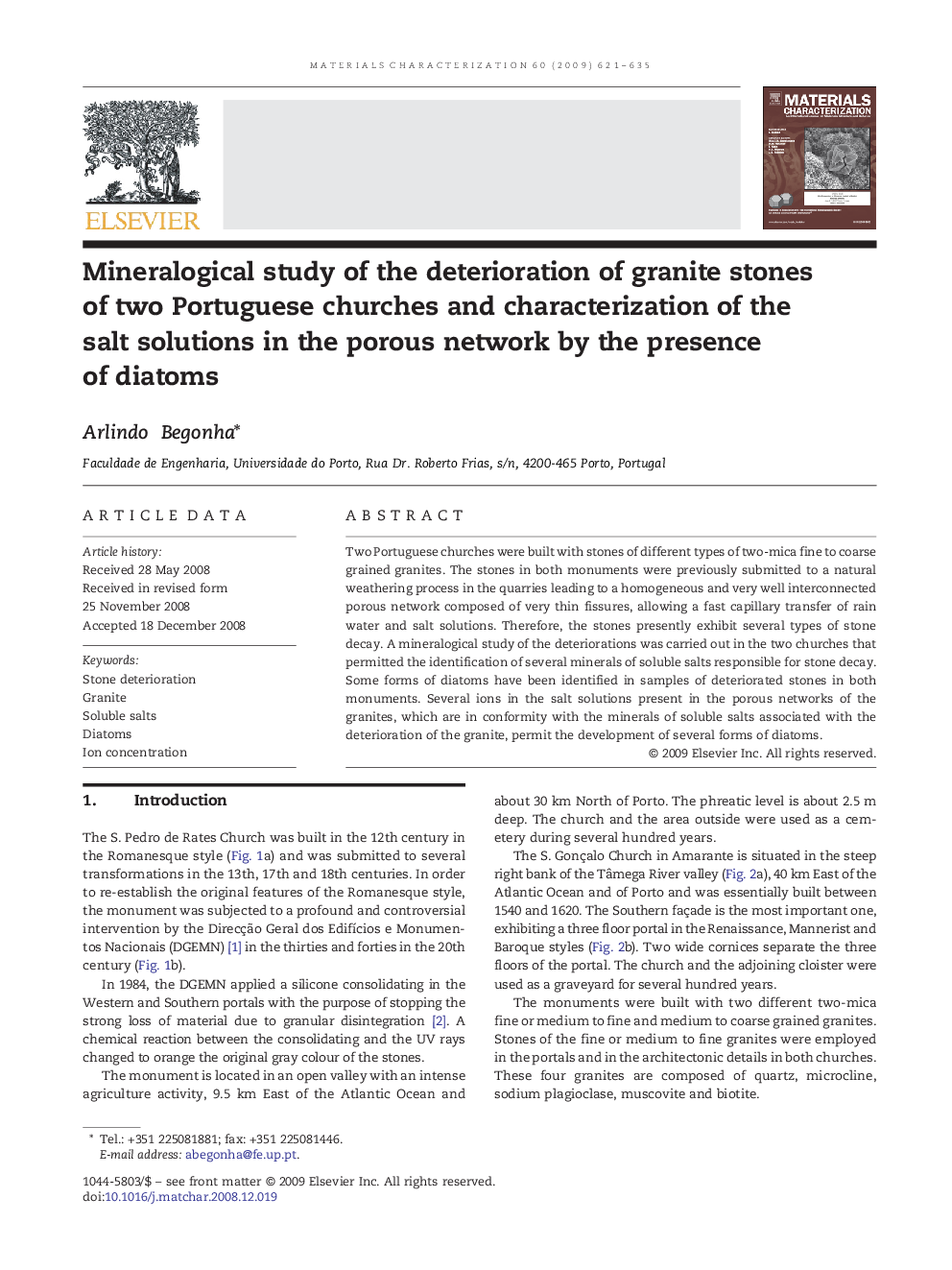| Article ID | Journal | Published Year | Pages | File Type |
|---|---|---|---|---|
| 1572148 | Materials Characterization | 2009 | 15 Pages |
Abstract
Two Portuguese churches were built with stones of different types of two-mica fine to coarse grained granites. The stones in both monuments were previously submitted to a natural weathering process in the quarries leading to a homogeneous and very well interconnected porous network composed of very thin fissures, allowing a fast capillary transfer of rain water and salt solutions. Therefore, the stones presently exhibit several types of stone decay. A mineralogical study of the deteriorations was carried out in the two churches that permitted the identification of several minerals of soluble salts responsible for stone decay. Some forms of diatoms have been identified in samples of deteriorated stones in both monuments. Several ions in the salt solutions present in the porous networks of the granites, which are in conformity with the minerals of soluble salts associated with the deterioration of the granite, permit the development of several forms of diatoms.
Related Topics
Physical Sciences and Engineering
Materials Science
Materials Science (General)
Authors
Arlindo Begonha,
